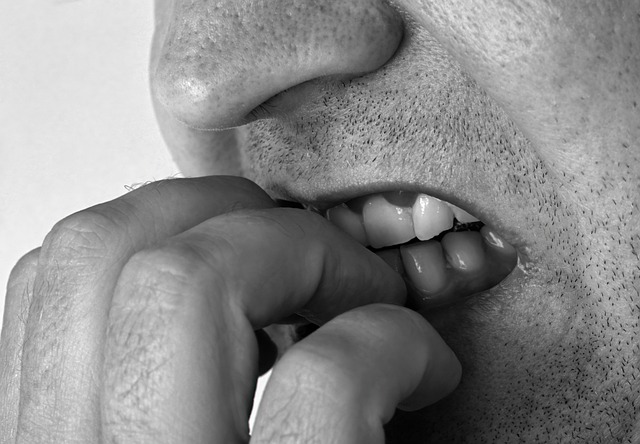Many people deal with a nail-biting habit at some point in their lives. Some will go to great lengths to try to stop, employing strategies like dipping their hands in salt or wearing gloves. And while not all of us are nail-biters, most of us do have a habit we’d like to kick. So, what’s the best way to break one? Explore how habits are formed, and discover tips on how to manage these behaviors.
Fill in the gaps in the video excerpt with the words in bold below
ingrained envisioning detrimental rewarding cued
intervene curbing trigger picking cues
Billions of people deal with a nail-biting habit at some point in their lives. Many will go to great lengths to try to stop, employing strategies like rubbing chili peppers on their cuticles wearing gloves all day, dipping their hands in salt, and 1. ………… bacteria crawling on their fingers. And while not all of us are nail-biters, most of us do have a habit we’d like to kick. So what’s the best way to break one? Scientists define habits as behaviors that are performed regularly, and 2. ……. subconsciously in response to certain environments, whether it be a location, time of day, or even an emotional state. They can include simple actions like 3. ……… your hair when stressed, but also more complex practices 4. ……… in daily routines, like staying up late or brewing your coffee in the morning. (…)
Let’s say after opening a stressful email, you bite your nails. This is 5. ………. , as it’s enough to focus your attention, 6. ……… your email fueled anxiety. Within your brain, positive experiences can 7. ………. the release of dopamine, a neurotransmitter that mediates feelings of pleasure. (…)
For behaviors like nail-biting or hair-pulling, a practice called habit reversal training can be helpful. Developed by psychologists in the 1970s, the aim is to change a habit by replacing it with another one that’s less 8. ……….. . The training requires you to analyze and understand your habit 9. ……. , so you can effectively 10. ………… at the right times. (…)
Now watch the video and check your answers:
Key: 1. envisioning; 2. cued; 3. picking; 4. ingrained; 5. rewarding; 6. curbing; 7. trigger; 8. detrimental; 9. cues; 10. intervene
Glossary
- cuticle – the thin skin at the base of the nails on the fingers and toes
- loop – a system consisting of a series of operations or activities in which each depends on the outcome of the previous one
- to outpace – to go, rise, improve, etc. faster than somebody/something
- preemptive (action) – made to keep some other action from being taken
Practice makes perfect
Read the last 6 paragraphs of the article: https://www.scientificamerican.com/article/how-the-brain-makes-and-breaks-habits and choose the right answer a)-d)
1. How is the process of monitoring habitual behaviors described in the text?
a) As a conscious effort
b) As an unconscious surveillance system
c) As an automatic response
d) As a trigger for stress and anxiety
2. What is the time prediction given for the possibility of zapping away pesky habits?
a) It’s imminent.
b) It’s expected in the near future.
c) It’s likely to happen soon.
d) It’s likely to be a long time.
3. What do the authors believe neuroscience is closing in on?
a) The ultimate cure for all mental disorders
b) The rules that habits work by
c) The secret to eternal happiness
d) The total mapping of the human brain
4. What potential benefit does our expanding knowledge on habits potentially provide for people at the severe end of the habit spectrum?
a) It could provide clues for how to treat disorders such as obsessive-compulsive disorder and Tourette’s syndrome.
b) It could completely cure all mental health disorders.
c) It could help in developing a universally applicable drug treatment.
d) It could prevent the onset of any mental health disorder.
5. How does the text suggest we can establish healthy habits and weed out unhealthy ones?
a) By relying solely on drug treatments and other emerging therapies
b) By changing our environment and rewarding ourselves for good behavior
c) By developing a complete understanding of neuroscience
d) By completely eliminating all cues that trigger bad habits
6. What does the quote from Mark Twain suggest about changing habits?
a) That habits can be easily changed
b) That habits should be discarded without consideration
c) That changing habits is a gradual process
d) That changing habits is impossible
Key: 1. B; 2. D; 3. B; 4. A;5. B; 6. C
Discuss
- What is the most annoying habit in your opinion?
- What is the worse habit that you’ve ever had?
- Who do you annoy with your bad habits? How do they react?
- Why do we pick up bad habits?
Explore more to create your own teaching-learning experience!
Most Highly Successful People Are Limited by Bad Habits, Especially These
Read
(3786)





